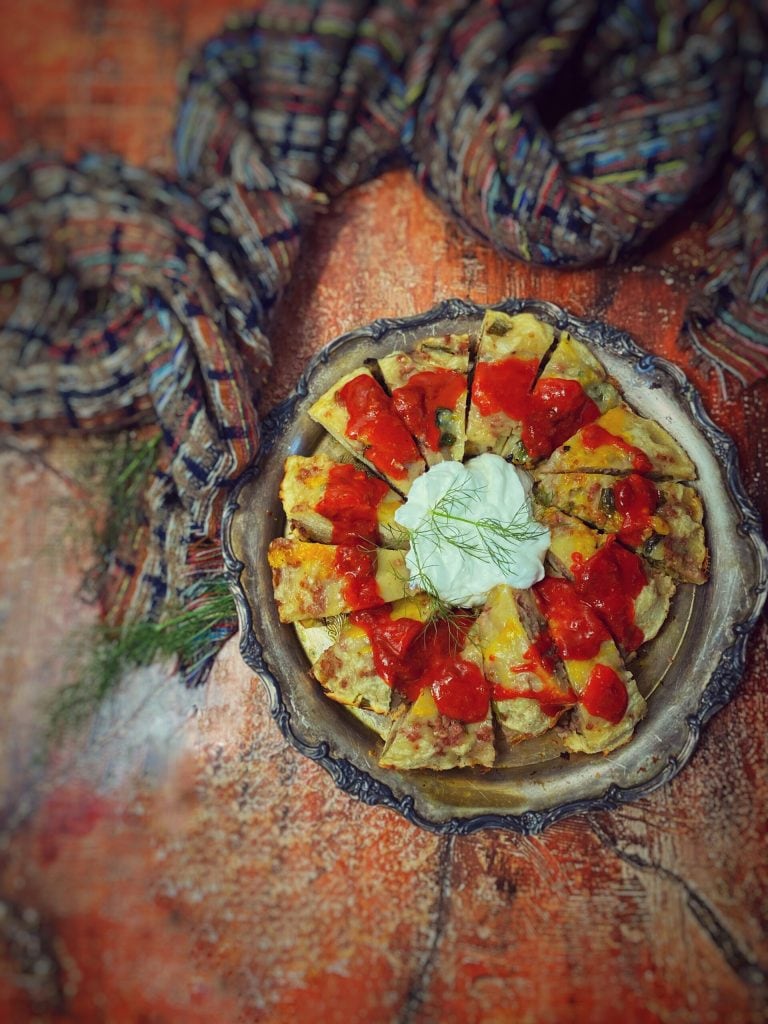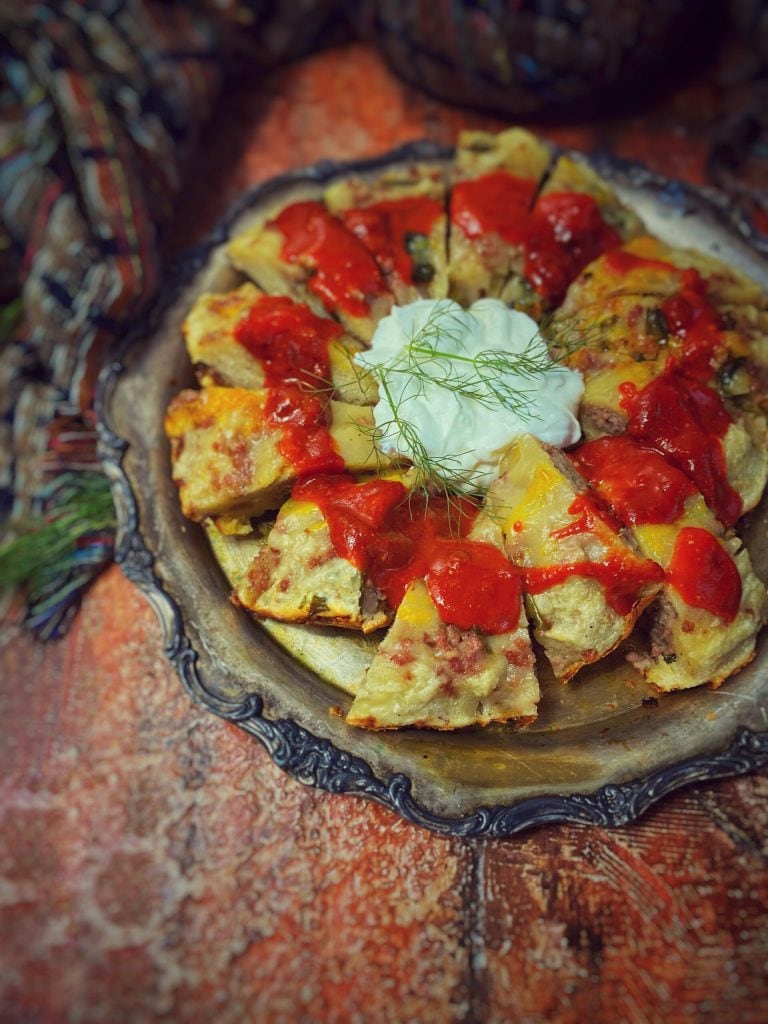Khanum, also spelled Hanum, khanym, or hanon, is a type of Uzbek dumpling steamed and served with tomato sauce and smetana (sour cream).
In the Fergana Valley, it is called urama, which translates to “bundle” or “wrapped,” reminiscent of the cooking method.
Although the Uzbek khanum shares similarities with familiar Turkish manti in terms of filling and cooking techniques, it represents a distinct and original dish.
The filling of khanum varies and includes both vegetable and meat options; it typically includes a base of potatoes and onions that can vary to sometimes include carrots, sliced chili, and minced or sliced red meat.
Regional differences also manifest in the cut of the filling; for example, Tashkent-style ones also add thinly sliced carrots, while other regions opt to dice them and may use only potatoes and onions without meat or carrots.
It can also take the form of rose flowers, known as “gul-hanum” in Uzbek, which translates to “flower hanum.”
Legend has it that it was born from a clever adaptation by a woman eagerly awaiting her husband’s return from war.
When she heard the news of his return, she wanted to meet him and surprise him with his favorite food, but simply did not have the time to prepare it.
So she improvised with the same ingredients.

Ingredients
- 4 cups flour
- 1 cup water
- 1 tsp olive oil
- to taste salt
- 10.5 oz ground lamb (or beef)
- 2 onions
- to taste cumin
- to taste coriander
- to taste salt and pepper
- 2/3 cup tomato sauce
- 1/2 onion
- to taste olive oil
- to taste salt and pepper
- to taste dill
- 5.5 oz smetana (or sour cream or plain yogurt)
Steps
Prepare the dough: by mixing the flour, warm water, egg, oil, and salt.
Work the dough and then roll it out thinly.
For the filling: mix the meat with onions, cumin, coriander, salt, and pepper (potatoes and/or carrots optional).
Spread the filling over the dough, roll it and then also on itself, like a “snake.”
Steam for 45 minutes.
I cooked with a Magic Cooker lid by spreading a little oil in the pan and 1 glass of water, for 35 minutes, on low heat.
For the sauce: sauté the tomato sauce in oil with onion, add salt, pepper, and dill.
Cut the khanum into pieces about 2 inches and top with tomato sauce, serve with smetana or sour cream or plain yogurt.

FAQ (Frequently Asked Questions)
What is Turkish manti?
Manti is a type of filled pasta typical of Turkish cuisine, Caucasian cuisines and Central Asian cuisines (particularly Kazakh and Uzbek), Uyghur cuisine, and Hejazi cuisine.
They consist of dumplings filled with seasoned minced lamb, horse, or beef that are boiled or steamed.
Size and shape of manti vary from place to place.
They are closely related etymologically to Chinese mantou, but resemble more jiaozi, Mongolian Buuz, Nepalese Momo, and Korean Mandu.

